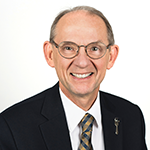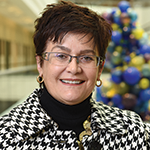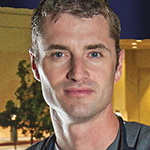Options Are Varied
 The options are as varied as the individual heading into retirement. Some pursue interests they haven’t had time to before. Dr. Matteson will extend his work with the Audubon Society and get certified as a Master Naturalist. Dr. Hendrie mentions a physician he knew who became a long-haul trucker.
The options are as varied as the individual heading into retirement. Some pursue interests they haven’t had time to before. Dr. Matteson will extend his work with the Audubon Society and get certified as a Master Naturalist. Dr. Hendrie mentions a physician he knew who became a long-haul trucker.
“Some may join or increase participation in service clubs, such as Rotary or Kiwanis,” says Dr. Geist. “Joining an area senior citizen’s center is good for socialization, and they often offer classes leading to new hobbies or interests. There may be a medical component if you teach classes on arthritis or bone density.”
Spending more time with your family can be a perk of retirement. Visiting—and spoiling—your grandchildren is a great thing to retire to.
Sports are another way to use your time. Engaging in golf, bowling or pickle ball will keep you busy and help maintain your health. Sports at centers or clubs provide opportunities for added social engagement.
“Those with fewer outside interests have a harder time,” says Mary Guerriero Austrom, PhD, associate dean of diversity affairs at Indiana University. “They get depressed, and miss their patients and being in charge. They spent their time being a doctor and aren’t comfortable outside that role.”
Spouse/Partner Plans
 Remember, your spouse or partner may be retiring, as well. If you both work, one may want to leave the workforce while the other doesn’t. Even if the doctor is the only one working full time, the other person in the relationship will sees changes in their life—if only due to the extra time the retiree is around.
Remember, your spouse or partner may be retiring, as well. If you both work, one may want to leave the workforce while the other doesn’t. Even if the doctor is the only one working full time, the other person in the relationship will sees changes in their life—if only due to the extra time the retiree is around.
“Many wives in our studies said it was difficult when the physician stepped back into their lives after not being as involved for 30 years,” says Dr. Austrom. “You must include your spouse or partner in retirement discussions.”
Your Financial Health
The CompHealth survey showed financial stability is key to a satisfying retirement. For most respondents (88%), having enough money was important.
Much of the preparation for this part is done during working years. It’s important to maximize contributions to retirement accounts. Some other financial aspects should also be kept in mind in the lead-up to retirement: “As a general rule, I think it is a bad idea to carry debt into retirement,” says James M. Dahle, MD, FACEP, editor of the White Coat Investor website. “It is cheaper to pay off a $100,000 mortgage than to dedicate $500,000 of your portfolio to producing the income needed to make those payments. It would help cash flow if you wait until after the kids are through college.”
You may need to sell your practice. Take steps to ensure your practice is attractive to a buyer before you try to sell it. (See more on this topic in “Prepare Now to Sell Your Medical Practice”)
There are legal issues to consider. According to Steven M. Harris, Esq., you need to notify your attorney, accountant, insurance agent and financial planner of your plan to retire, not to mention your partners and your patients. Will you keep your license active or change your status to retired?
Other considerations include when to take Social Security (SS) income. For healthy, single people or those with only one income, Dr. Dahle suggests age 70. If there are two incomes in the household, 70 is suggested for the higher earner and a younger age for the lower. You may want to consider a single premium immediate annuity to cover fixed expenses your SS and pension won’t.
 The rule of thumb is that a well-designed portfolio provides a safe, yearly withdrawal rate of 4% of its initial value, adjusted upward yearly for inflation, for at least 30 years of retirement. Bear in mind the 4% figure includes taxes and fees.
The rule of thumb is that a well-designed portfolio provides a safe, yearly withdrawal rate of 4% of its initial value, adjusted upward yearly for inflation, for at least 30 years of retirement. Bear in mind the 4% figure includes taxes and fees.
“You’ll need to adjust as you go to account for the ups and downs,” says Dr. Dahle. “If the first five years have particularly bad returns, you’ll need to adjust spending downward. If they are great, you can probably take more out.”
You may want to work with a financial planner or similar professional. This will help you understand your position, how to maintain it and what to monitor going forward.

